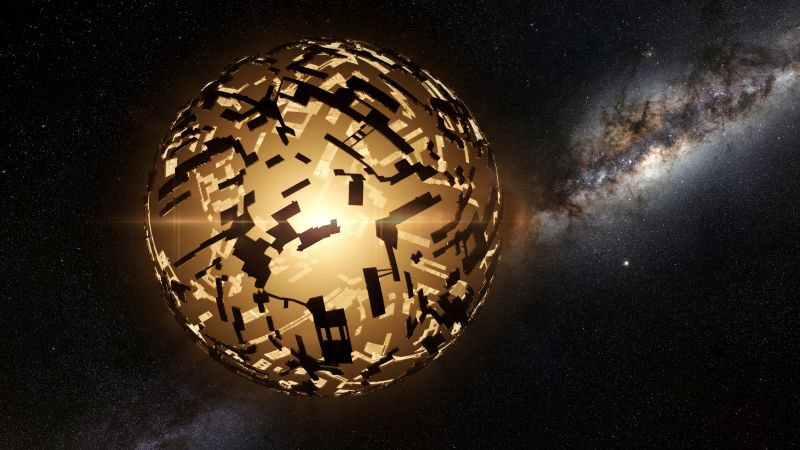Time: 2024-06-20

Hot, dust-obscured galaxies (Hot DOGs), like the one circled in purple, may have similar energy signatures to hypothetical alien structures called Dyson spheres, new research suggests. According to astronomers, Dyson spheres are artificial constructs designed by aliens to leech energy from stars. The team of astronomers combed through a collection of odd stars that are candidates for Dyson spheres. Instead, they found that the peculiar stars are more likely to be "hot DOGs" hot dust-obscured galaxies.
In early 2024, astronomers searched for stars with excess infrared radiation, a potential signature of a Dyson sphere. This theoretical construct, proposed by physicist Freeman Dyson in the 1960s, could provide alien civilizations with millions of times more solar energy than Earth has access to. However, recent research has identified seven stars emitting an abnormally large amount of infrared radiation, making them potential Dyson sphere candidates within 1,000 light-years of Earth.
A more recent study examined the seven candidates in greater detail and found that three of them are close to hot dust-obscured galaxies, known as Hot DOGs. These galaxies are surrounded by thick dust clouds that emit significant amounts of infrared radiation. While the research doesn't completely rule out the existence of advanced alien civilizations using Dyson spheres, it highlights the complexity of astronomy and the potential for misleading observations due to chance alignments.
The search for Dyson spheres has attracted attention from various researchers, including those at the SETI Institute and Fermi National Accelerator Laboratory. A recent study looked at 5 million stars in the Milky Way galaxy and identified seven candidates potentially hosting Dyson spheres. These stars are red dwarfs, the most common type of star in the galaxy, making follow-up observations challenging.
While the search for Dyson spheres remains ongoing, researchers have encountered challenges in confirming the presence of these hypothetical megastructures. Data from telescopes such as the Wide-field Infrared Survey Explorer and Gaia Observatory have led to the identification of candidates emitting excess infrared heat. However, distinguishing between natural causes and artificial constructs like Dyson spheres requires further investigation.
Scientists emphasize the need for additional research and plan to utilize the James Webb Space Telescope for more detailed observations. The vast scale and technical requirements for constructing Dyson spheres suggest that if they exist, they are likely rare occurrences. Despite the uncertainty surrounding these candidates, the search for Dyson spheres represents a significant endeavor that could shed light on the existence of extraterrestrial intelligence.